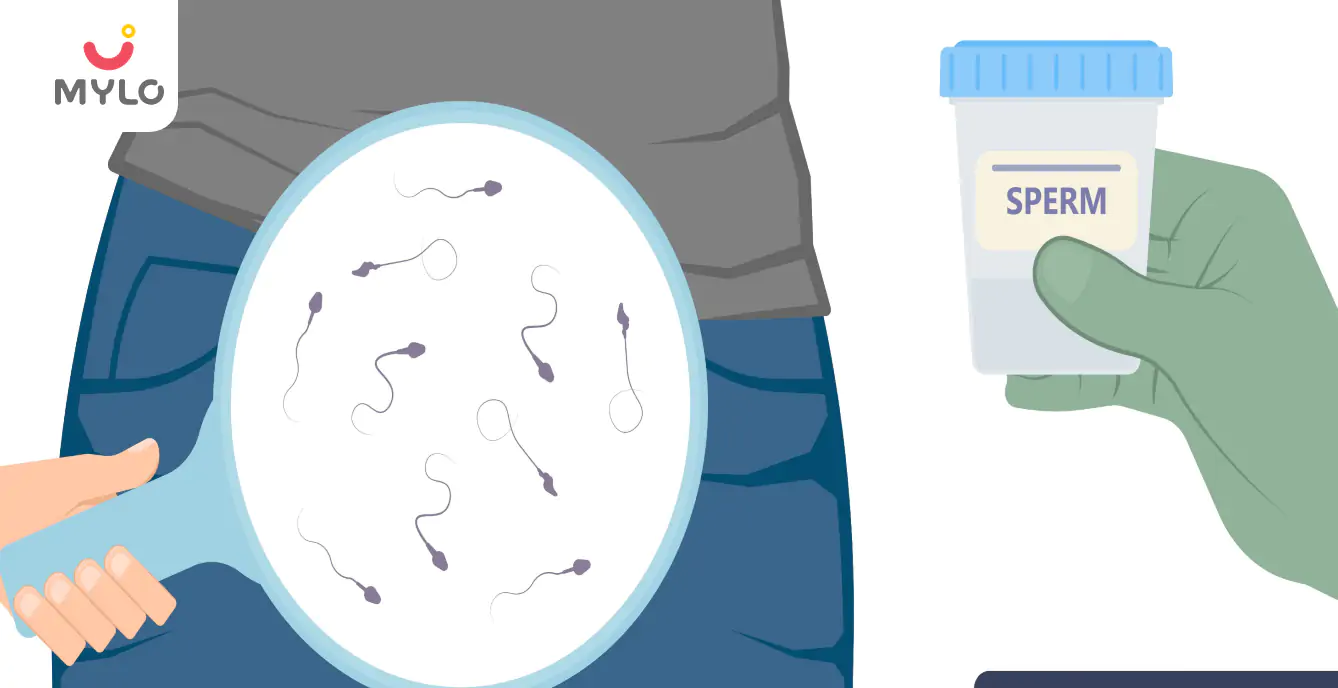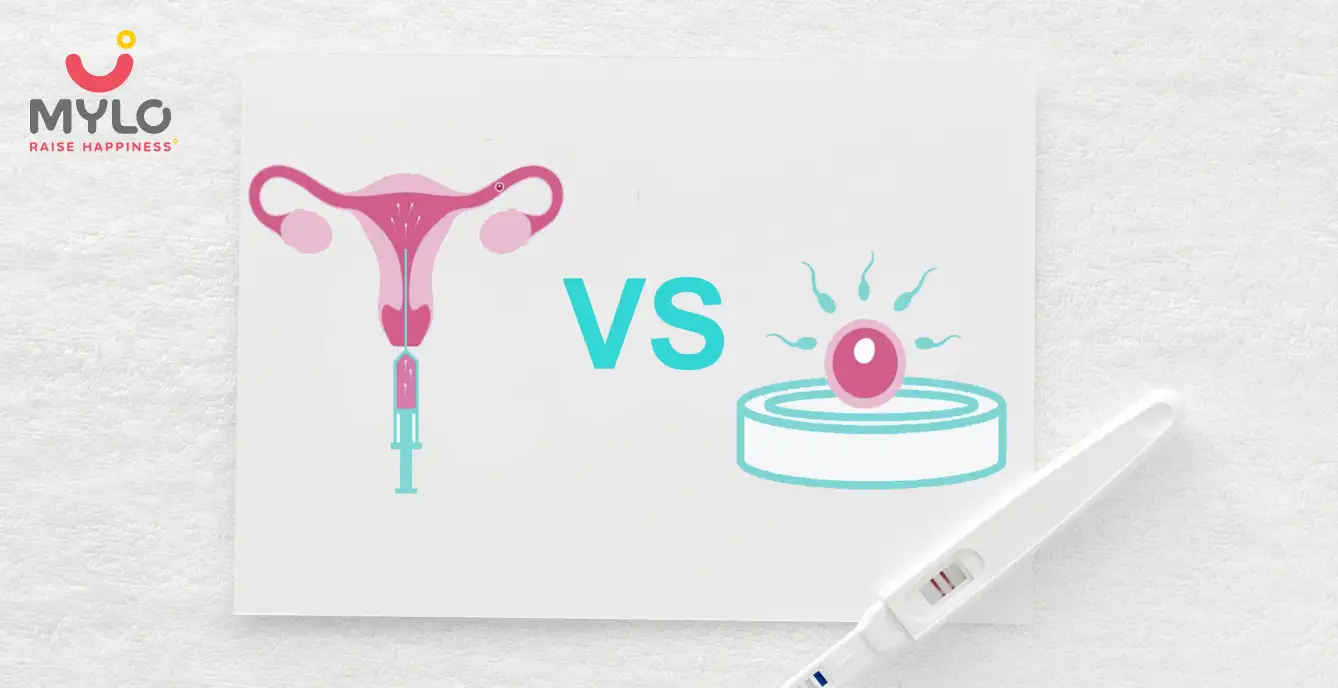Home

Male Infertility

Hyperspermia: The Ultimate Guide to Understanding Excessive Semen Production
In this Article

Male Infertility
Hyperspermia: The Ultimate Guide to Understanding Excessive Semen Production
Updated on 31 July 2023
Mohit was in a state of dilemma as he did not know what to do about a strange condition-Hyperspermia. He decided to share his plight with his best friend, Vikas. Mohit said, "I am stressed about excess semen production during ejaculation." Vikas gave him hope by saying," But I guess you are overthinking, and in my opinion, underproduction is an issue." They explored reliable journals and medical books to understand the relationship between hyperspermia and fertility. Let's discuss their findings and expand our knowledge base.
What is hyperspermia?
Hyperspermia is a condition in which a man produces an abnormally high volume of semen during ejaculation. Typically, the average volume of semen released during ejaculation is around 2 to 6 milliliters. In cases of hyperspermia, the volume of semen may exceed this normal range significantly.
While hyperspermia itself is not considered harmful, it can sometimes be associated with underlying medical conditions or lifestyle factors. It may be linked to certain infections, hormonal imbalances, prostate issues, or even frequent ejaculation or sexual activity. In some cases, hyperspermia can also be a symptom of infertility, although it is not the sole determinant of fertility.
You may also : Hypospermia: What Every Man with Low Semen Volume Should Know
What is the normal ejaculation volume?
The normal semen count typically ranges from 2 to 6 milliliters (approximately 1/2 to 1 1/4 teaspoons). However, individual variations are common, and some men may ejaculate slightly more or less than this range. Factors such as age, frequency of ejaculation, and overall health can influence the volume of semen released during ejaculation. However, it's important to note that hyperspermia can sometimes be associated with underlying medical conditions or lifestyle factors that may cause other symptoms. These potential underlying causes may include:
-
Prostate issues like prostatitis (inflammation of the prostate) or benign prostatic hyperplasia (enlarged prostate)
-
Infections
-
Infertility concerns
-
Other associated conditions such as varicocele (enlarged veins in the scrotum)
If a man has concerns about his ejaculate volume or experiences any other concerning symptoms related to his reproductive or sexual health, it is crucial to seek medical evaluation from a healthcare professional or a urologist.
What causes more than average ejaculation volume?
An ejaculation volume that exceeds the average range (2 to 6 milliliters) can be caused by several factors. Some of the common causes of more than normal ejaculation volume include:
1. Frequent Ejaculation
Men who ejaculate frequently, either through sexual activity or masturbation, may have higher semen volume during each ejaculation.
2. Hydration
Being well-hydrated can lead to a higher volume of semen. Drinking plenty of fluids can contribute to increased ejaculate volume.
3. Age
Younger men tend to produce more semen compared to older men, and therefore, age can influence the ejaculation volume.
4. High Testosterone Levels
Testosterone, the primary male sex hormone, is linked to semen production. Higher testosterone levels may lead to increased ejaculation volume.
5. Prostate Issues
Certain prostate conditions, such as prostatitis (inflammation of the prostate) or benign prostatic hyperplasia (enlarged prostate), can result in more semen being produced during ejaculation.
6. Hormonal Imbalances
Imbalances in hormones, including testosterone and other reproductive hormones, can affect semen production.
7. Medications
Certain medications or supplements may influence ejaculation volume as a side effect.
8. Lifestyle Factors
Factors like diet, exercise, and overall lifestyle can impact normal semen count.
You may also like : 10 Foods That Increase Testosterone: The Ultimate Guide to Testosterone-Boosting Foods
What's the relation between hyperspermia and fertility?
The relation between hyperspermia (higher than average ejaculation volume) and fertility is not direct. Hyperspermia itself is generally not a cause of infertility. In fact, having a higher volume of semen does not necessarily indicate better fertility or higher sperm count.
Fertility depends on various factors, with sperm quality and quantity being essential contributors. The concentration and motility of sperm in the semen, as well as their ability to fertilize an egg, play crucial roles in determining fertility.
While hyperspermia may not directly affect fertility, it can sometimes be associated with underlying issues that could impact fertility. For example:
1. Low Sperm Count
Despite higher semen volume, a man with hyperspermia could have a lower sperm count, which may affect fertility.
2. Hormonal Imbalances
Underlying hormonal imbalances that contribute to hyperspermia might also affect sperm production and fertility.
3. Prostate Issues
Conditions affecting the prostate, which can be associated with hyperspermia, might impact sperm quality or ejaculatory function.
4. Other Reproductive Health Conditions
Hyperspermia could occur alongside other reproductive health issues that may influence fertility.
You may also like : Sperm Cramps: Debunking Myths and Shedding Light on the Facts
How is hyperspermia diagnosed?
The diagnosis of hyperspermia involves a thorough evaluation of the individual's medical history, physical examination, and specific tests. To diagnose hyperspermia and rule out any underlying conditions, the following steps are typically taken:
1. Medical History
The healthcare professional will discuss the individual's medical history, including any symptoms, sexual history, and lifestyle factors that may be contributing to the condition.
2. Physical Examination
A physical examination, including examination of the genital area, may be conducted to assess for any signs of abnormalities or underlying conditions.
3. Semen Analysis
A semen analysis is the primary diagnostic test for hyperspermia. The sample is then analyzed in a laboratory to determine the volume of semen, sperm count, sperm motility (movement), and sperm morphology (shape). This analysis helps assess the overall quality of the semen and its potential impact on fertility.
4. Hormonal Tests
In some cases, blood tests may be conducted to measure hormone levels, such as testosterone and other reproductive hormones, to check for any hormonal imbalances that could be contributing to hyperspermia.
5. Imaging Tests
If there are concerns about the prostate or other reproductive organs, imaging tests such as ultrasound may be performed to visualize and assess their structure and function.
6. Additional Tests
Depending on the findings and suspected underlying causes, additional tests or evaluations may be recommended to identify any related conditions or issues.
Also Read : Understanding Premature Ejaculation: Causes, Symptoms, and Treatment Options
Treatment options for hyperspermia
Hyperspermia typically does not require specific treatment on its own as it is not considered harmful. However, if hyperspermia is associated with an underlying condition or is causing significant discomfort, addressing the root cause may be necessary. Treatment options for hyperspermia may include:
1. Addressing Underlying Conditions
If hyperspermia is related to prostate issues, hormonal imbalances, or other medical conditions, treating the underlying cause may help manage the condition.
2. Medication
In some cases, medication may be prescribed to manage prostate inflammation (prostatitis) or other related conditions.
3. Lifestyle Modifications
Making certain lifestyle changes, such as reducing the frequency of ejaculation or avoiding triggers that may lead to increased semen volume, can help manage hyperspermia.
4. Counseling
If hyperspermia is causing emotional distress or affecting sexual relationships, counseling or therapy may be beneficial.
5. Regular Check-ups
Regular follow-up appointments with a healthcare professional can help monitor the condition and ensure that any underlying issues are appropriately managed.
Final thoughts
In conclusion, hyperspermia refers to the condition of having an abnormally high volume of semen during ejaculation. While it is generally not considered harmful on its own, it can sometimes be associated with underlying medical conditions or lifestyle factors. If any concerns arise about normal ejaculation volume or reproductive health, consulting with a healthcare professional or a urologist is crucial for personalized evaluation and guidance.
References
-
Cooke, S., Tyler, J. P. P., & Driscoll, G. L. (1995). Andrology: Hyperspermia: the forgotten condition? Human Reproduction
-
Hyperspermia: Symptoms, treatments, and causes.



Written by
Madhavi Gupta
Dr. Madhavi Gupta is an accomplished Ayurvedic doctor specializing in Medical content writing with an experience of over 10 years.
Read MoreGet baby's diet chart, and growth tips

Related Articles
Related Questions
Hello frnds..still no pain...doctor said head fix nhi hua hai..bt vagina me pain hai aur back pain bhi... anyone having same issues??

Kon kon c chije aisi hai jo pregnancy mei gas acidity jalan karti hain... Koi btayega plz bcz mujhe aksar khane ke baad hi samagh aata hai ki is chij se gas acidity jalan ho gyi hai. Please share your knowledge

I am 13 week pregnancy. Anyone having Storione-xt tablet. It better to have morning or night ???

Hlo to be moms....i hv a query...in my 9.5 wk i feel body joint pain like in ankle, knee, wrist, shoulder, toes....pain intensity is high...i cnt sleep....what should i do pls help....cn i cosult my doc.

Influenza and boostrix injection kisiko laga hai kya 8 month pregnancy me and q lagta hai ye plz reply me

Related Topics
RECENTLY PUBLISHED ARTICLES
our most recent articles

Reproductive health
Painful Ejaculation and Its Impact on Men's Health: From Stigma to Solutions

Male Infertility
Hypospermia: What Every Man with Low Semen Volume Should Know

Allergies
Eye Flu Alert: The Seasonal Epidemic You Need to Know About

Periods
How Many Days After IUI Should I Get My Period: Understanding the Timeline

Scans & Tests
An Expecting Mother's Guide to Glucose Tolerance Test (GTT)

In Vitro Fertilization (IVF)
Difference Between IUI and IVF: Which is Better for You?
- Ovarian Stimulation: Understanding the Process and What to Expect
- IVF Baby Delivery: Will You Have a C Section or Vaginal Delivery?
- How Many Injections for IVF Treatment Do You Really Need
- IUI Failure Symptoms & Reasons: Understanding Why IUI Fails & What to Do Next
- Fever During Breastfeeding: Tips from Experts for New Moms
- Indian Food to Increase Breast Milk: Everything You Need to Know
- Lactose Intolerance in Babies: A Parent’s Guide to Identifying and Managing it
- TESA IVF: How This Procedure Can Help You Achieve Your Dream of Parenthood
- How Can You Encourage Sensory Play for Your Baby and What are Its Benefits?
- After How Many Weeks IVF Pregnancy Is Safe: Understanding The Ideal Timeline
- Exploring the Senses: 9 Incredible Benefits of Sensory Play for Your Child's Development
- The Ultimate Guide to Childproofing Your Home
- Start Their Love for Reading Early: The Best Books for Baby's First Library
- CMPA (Cow's Milk Protein Allergy): Identifying Symptoms and Understanding Treatment


AWARDS AND RECOGNITION

Mylo wins Forbes D2C Disruptor award

Mylo wins The Economic Times Promising Brands 2022
AS SEEN IN
















- Mylo Care: Effective and science-backed personal care and wellness solutions for a joyful you.
- Mylo Baby: Science-backed, gentle and effective personal care & hygiene range for your little one.
- Mylo Community: Trusted and empathetic community of 10mn+ parents and experts.
Product Categories
baby carrier | baby soap | baby wipes | stretch marks cream | baby cream | baby shampoo | baby massage oil | baby hair oil | stretch marks oil | baby body wash | baby powder | baby lotion | diaper rash cream | newborn diapers | teether | baby kajal | baby diapers | cloth diapers |








